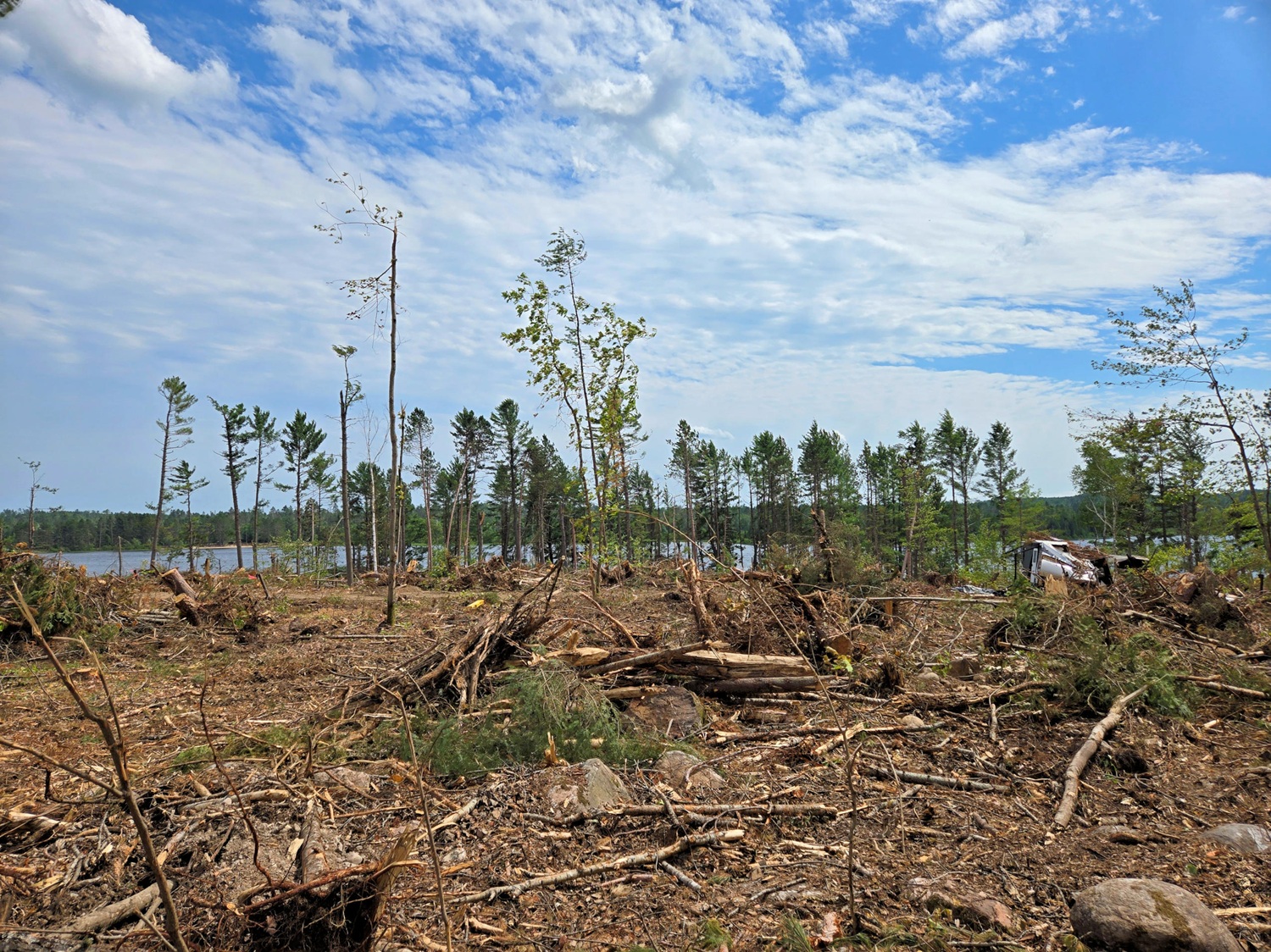
Today’s post comes from Nick Lacombe, fisheries biologist at Algonquin Provincial Park.
For me, springtime in Algonquin means trout fishing.
Many others share this feeling, as about 70% of backcountry campers fish for trout during their spring trips. Lakes containing Brook and Lake Trout are found throughout the Algonquin backcountry, with the best lakes often being more challenging to reach.
Fellow anglers, we need your help to protect Algonquin’s trout populations.
Starting on the opening day of trout season (April 27, 2024), angler survey packages will be available at all operating Algonquin offices.
Do your part and complete an angler survey.
~
What makes spring trout fishing so great?
At this time of year, lake surface water is still cold, making it possible to catch cold-water-loving species like the Brook and Lake Trout in shallow water close to shore.
This makes for excellent trout fishing.
Although the sun may be shining with positive air temperatures, all backcountry visitors must be cautious of the risks of cold water.
Regardless of the time of year, I always wear my PFD and let someone know my travel plans.

After ice out, the heat from the sun slowly warms the shallow waters along the shore, drawing an assortment of life.
Amphibians, minnows, and insects gather in these shallow waters, all of which are food for trout. They will use these shallow areas to find food until the water becomes too warm sometime in June or July.
At that point, trout are forced to spend most of their time in the deep, cold water, making summer trout fishing much more challenging.
That’s why most trout anglers plan trips during spring months to capitalize on the lake conditions.
*Need help identifying your catch? Check out this guide.
~
How to catch spring Brook Trout
Brook Trout are by far my favourite fish and are a symbol of the protected lakes of Algonquin.
My spring Brook Trout fishing probably resembles how most fish for bass in the summer. A productive way to catch Brook Trout in the spring is to cast into shore around structures such as weeds, boulders, beaver houses, or fallen trees.
However, the time of day is key, and I have the greatest success during the early morning.

Effective lures include spoons, spinners, jigs, and crankbaits.
For fly fishing, a minnow imitation such as the woolly bugger is a great option.
Although anglers can use dead baitfish and worms in much of the Algonquin backcountry, I rarely do.
Worms are not native to Algonquin and can negatively impact forest ecosystems if improperly disposed of. Besides the risks of using worms, I don’t need organic bait to catch a Brook Trout for dinner in the backcountry, as most lakes offer excellent fishing.
~
Trout catch and release
We know that about 60% of trout caught in the backcountry of Algonquin are released.
I often practice catch and release, especially when it comes to large Brook and Lake Trout, which are major contributors to future generations.

In combination with the cold spring water, there are a few key methods that help trout be successfully released in good health.
Here are some good practices for successfully releasing trout caught in the spring:
- use barbless hooks in combination with proper fishing gear that will limit fight time
- use a large rubber landing net and keep the fish in the water as much as possible
- use a hook removal device to remove hooks while the fish is in the water
- hold the fish in or over water with your hands gripping the base of the tail, then support the front of the fish with your other hand
- limit the amount of time fish are out of the water. If taking a photo, get set up before removing the fish from the net
- revive the fish next to the watercraft if required; as soon as the fish tries to swim away, release it
~
How you can help: return of the Algonquin angler survey
Algonquin is central Ontario’s last stronghold of natural Brook and Lake Trout.
We ask that you do your part and complete an angler survey to help protect this valuable resource.
We are excited to restart the tradition of the angler survey, which ran from 1997 to 2019, and look forward to hearing from anglers once more.
We ask that any camping party (backcountry or campground) fishing for trout or bass please visit an Algonquin office to pick up a voluntary angler survey package.

The survey is a pocket-sized sheet printed on waterproof paper and takes just minutes per day to complete.
At the end of your trip, you may mail the survey to Algonquin in the postage-paid envelope provided or return it to any park office.
You could win one of five Ontario Parks annual vehicle permits by submitting a completed survey! (More details available at the park.)
The information you provide helps the park set fishing regulations to ensure angler harvest is sustainable and maintains the park’s ecological integrity.
As a trout angler and biologist, I always complete my angler survey, as I know the data’s value in helping to protect the Brook and Lake Trout populations of Algonquin.
I hope you’ll join me in completing an angler survey on all your camping trips to Algonquin.


